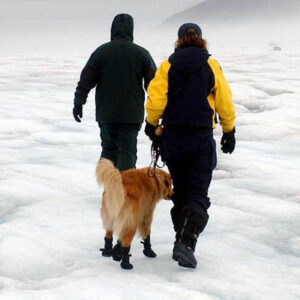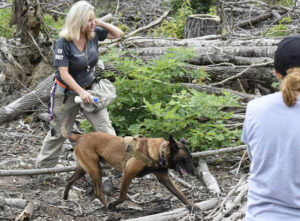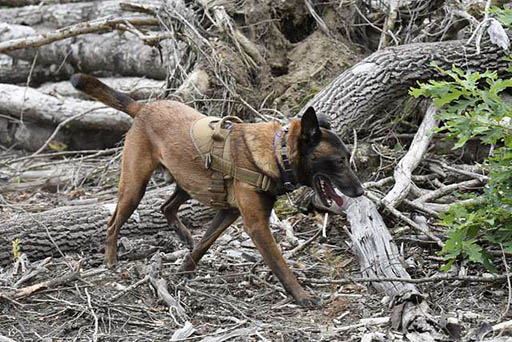
How Culture and Suicide Differs and Affects Different Countries
May 18, 2023
What Are Phantom Smells?
June 2, 2023Cadaver dogs like the Labrador Retriever or German Shepherd are specially trained to detect human remains. They may be used for a variety of situations by police enforcement or private investigators. They are not the same as K9 units that patrol or sniff out illicit substances at the airport. Cadaver dogs are more specific task-oriented dogs that work on crime scenes, disaster sites, search and rescue, or locating evidence. Cadaver dogs may also be used when someone is missing or suspected deceased. An example of cadaver dogs being used for this purpose is using them to search Aokighara Forest for a missing individual.
If a cadaver dog has found human remains, it will alert its handler by barking, sitting, or lying down. The handler will then mark the area and call detectives or other authorities to investigate. The professionals will then determine the identity of the remains, the cause of death, and any other pertinent information.
You may have seen these types of dogs in shows or after witnessing a search and rescue in progress. They are generally used by law enforcement although private detectives may use them as well.

A Golden Retriever working on the ice and snow in search of a cadaver.
Not All Dogs Are Candidates for Cadaver Training
The German Shepherd Dog and the Labrador Retriever are the two most common cadaver dog breeds, however, these two breeds are not exclusive for this type of training. Any dog can be a good candidate for cadaver training, so long as they have an excellent drive for hunting, and retrieving. They must also have solid nerves and be confident while working. In addition to the German Shepherd and Labrador Retriever, other potential cadaver dog breeds include:
- Bloodhound
- Doberman Pinscher
- Belgian Malinois
- Coonhound
- Dutch Shepherd
Although these dog breeds are traditionally known for their excellent ability in hunting, searching, or retrieving, their potential is reached through training and work experience.
How Cadaver Dogs Are Trained
Cadaver dogs are trained as early as six months old to detect the smell of human remains through obedience training and scent discrimination. Scent discrimination refers to the method trainers use to train a dog to recognize and differentiate between distinct scents using positive reinforcement–aka rewarding the dog for recognizing a target odor.

A cadaver dog in training, searching for planted body parts.
The training is usually conducted in a controlled environment and may use a variety of substances. Human blood, articles of clothing worn or items heavily scented with the target, and sometimes even actual organic decomposition matter may be used.
When the dog finds the target, he may lie down, bark, or sit. It’s extremely useful for detective teams to use animals to help them find a missing person that is suspected to be dead.
The Accuracy and Reliability of a Cadaver Dog
The accuracy of a cadaver dog is surprisingly accurate and reliable. In general, it’s been estimated cadaver dogs are accurate 95% of the time they signal their handler or lead them to human remains.
How Does The Dog Know Animal vs. Human?
A dog has a very acute, distinct, sharp sense of smell. In their nose, there are more than 100 million receptors–significantly more than the 6 million receptors found in a human’s. The region of their brain responsible for smell is also 40 times larger than the same region responsible for smell in a human brain.
What Happens After Human Remains Are Found?
When a dog has discovered human remains, it will signal to its handler that it has found its target. The handler will isolate the area, closing it off using crime scene tape. They may also indicate the area is a crime scene with markers, a sign, a flag, or a cone. They also typically photograph the area and write notes on anything they believe is important.
The scene is then reported to law enforcement. A detective will arrive at the scene, survey the area, collect evidence, and then authorities will try to verify and identify the individual. A coroner is also called to the scene to remove the remains and, when conditions allow, determine the cause of death.
A cadaver dog’s work is not yet done, however. After the area is thoroughly documented, a handler will then use part of the remains found in the area in an effort of tracking down more evidence or information. Sometimes, the handler uses this method to let the dog bring them to other locations the victim may have been, and other times it has led them right to items left behind by the perpetrator.
Man’s Best Corpse Tracker
The accuracy and resourcefulness of these dogs cannot be understated. While many dogs do unfortunately end up discovering those that have deceased, the reality is that they help bring some closure to their families and loved ones. Without their help, hundreds may never find their way home or be given a proper ceremony or burial.
The crew at Suicide Cleanup (SCU) certainly understands the importance of closure in these situations. That’s exactly the reason why SCU is in this line of work. Cleaning up after the remains of a loved one should never be left to the family; going through a loss is enough. If you are in this situation, know that help is a call away. Call the nationwide emergency professionals at Suicide Cleanup (SCU) if you’re currently facing the aftermath of a suicide and need the assistance of a professional crew to assist with the cleanup. We’re here for you.




